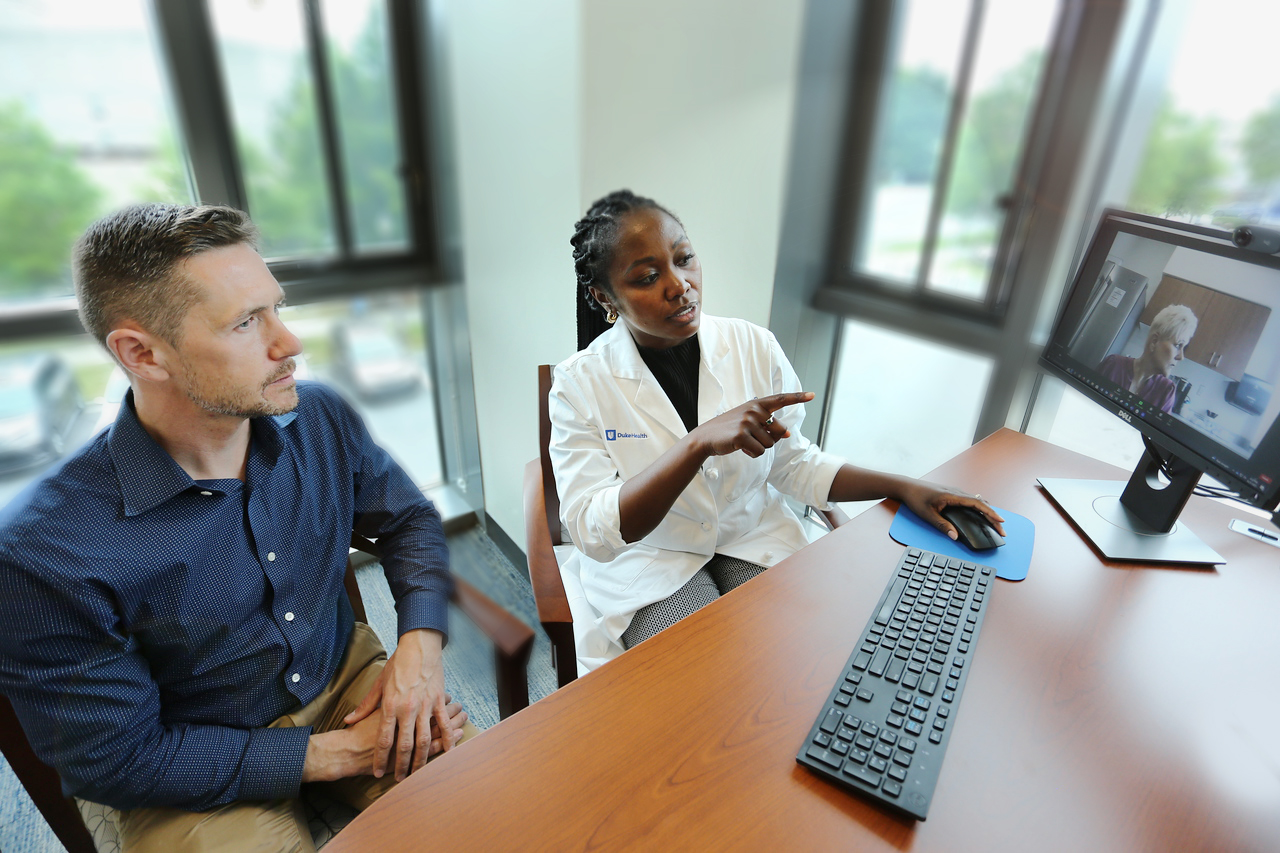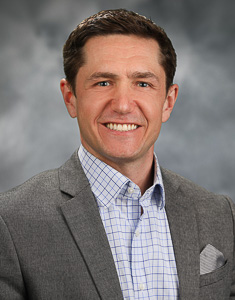Health Equity Reimagined
Solutions in Action: NEWS
Real-time Data Collection Could Increase Access and Timeliness of Care for Underserved Patients
Professors, students, and staff in the Duke University School of Nursing (DUSON) are collaborating with other Duke partners including the School of Medicine on an innovative study involving at-home data-collecting and monitoring of patients with Type 2 diabetes and high blood pressure. DUSON Associate Professor Ryan Shaw, PhD, RN, is the principal investigator of the five-year, NIH-funded study called Expanding Technology-Enabled, Nurse-Delivered Chronic Disease Care (EXTEND). He is joined by his Co-Principal investigator, Matthew Crowley, MD, from the Department of Endocrinology in the Duke School of Medicine. In June, the study enrolled 220 patients from five Duke Health System clinics who will participate in the study for two years with check-ins every three to six months.
While telehealth became a critical way to monitor patients during the pandemic, this study aims to broaden the scope and impact of remote health care and data collection. “What’s so novel about this is that we are generating evidence to scale telehealth to patients,” Shaw said. “We’ve pushed the ability to receive real-time clinical data from the patients wherever they are.”
Participants received four take-home devices to track blood sugar, blood pressure, weight and daily activity by digitally connecting the devices to their phones. This daily data is directly loaded into the patient’s electronic health record (EHR) at Duke Health and designed to alert a clinic nurse when something is off. The study hired nurses to lead the teams, which include pharmacists and physicians. The nurses view the data as it is collected and can leave notes for the clinic pharmacist through the EHR if, for instance the medication needs to be adjusted. The clinic pharmacists have been credentialed by the state of NC to be able to make medication adjustments. If a medication change is made, the pharmacist notifies the nurse to implement the change with the patient.
The EXTEND study also includes telehealth encounters, where the nurse meets online with the patient for check-ins every two to four weeks. This type of ongoing health care delivery aims to head off clinical events, Shaw said, which are more likely to happen if a patient sees a caregiver annually at best, with limited, self-reported data.
EXTEND was designed through a health equity lens, Shaw said, noting that the majority of the participants are from underserved backgrounds. Community consultants included a group of Black pastors, who offered feedback on designing the study to make it resonate with populations in Durham and surrounding areas who struggle with managing their diabetes and hypertension in the face of negative social determinants of health. Many patients are from rural, low-income populations who might have barriers to transportation, and food and job insecurities, and who have not responded to the standard health care model of clinic-based care, Shaw said. “We’re changing to a more proactive health care system and being able to increase access to care by delivering telehealth instead of always having to come in person.”
DUSON ABSN student and EXTEND study colleague Diana Urlichich agrees with Shaw, "Working on the EXTEND project, it has been powerful to see how medical technology, along with direct nurse and pharmacist support, can empower patients to be involved in their health actively and to make adjustments when needed in real-time.
Clinical Research Nurse Coordinator, Sherry Huber cites some of the practical beneifts of the study thus far, “ To me, the greatest benefit to being a part of this study is seeing many participants become healthier and more physically active due to health knowledge that they have learned. Some participants are completely off of insulin and off of some of their blood pressure medications due to major health improvements such as A1C below 6% and blood pressure below 130/80 and significant weight loss.
If the EXTEND study produces positive results as expected, the next stage would be implementing this care model within Duke at large, and beyond, Shaw said, adding that it is something that could eventually be used for every patient. Because data management is a huge part of health care, the EXTEND study offers an exciting glimpse of how data can get more quickly into the hands of providers on a patient-by-patient basis. For instance, traditional glucose monitors collect blood sugar levels of patients, but the data is kept within that company. A provider would have to access those records separately, and there are no real-time alerts that go directly to the patient’s health record. The EXTEND study hopes to change that process for the better, not just health wise, but cost-wise as well.
“The EXTEND trial is at the forefront of innovation, creating a seamless channel for patients with diabetes and hypertension to engage more effectively with their healthcare providers. The real-time insights provided by digital health technologies not only empower healthcare professionals to make informed decisions but also inspire patients to take greater self-efficacy and ownership of their health,”
Donghwan Lee
School of Nursing PhD Student
Encouraged by the study’s preliminary results, “The EXTEND trial is at the forefront of innovation, creating a seamless channel for patients with diabetes and hypertension to engage more effectively with their healthcare providers. The real-time insights provided by digital health technologies not only empower healthcare professionals to make informed decisions but also inspire patients to take greater self-efficacy and ownership of their health,” said Donghwan Lee, DUSON PhD student.
Shaw said he hopes the study will prove this technology is a sustainable business model, so it could be reimbursed by Medicare and Medicaid. Preventative and proactive health care saves money and helps improve patient health outcomes. Led by DUSON Associate Professor Qing Yang, PhD, in the last year of the trial in 2025, the EXTEND team will focus on an innovative approach to use data from the remote monitoring devices to predict patient safety events such as emergency department visits and hospitalizations. “Instead of waiting for patients to come into urgent care or the emergency department, we’re hoping we can create digital biomarkers which would be an indication of something that’s happening,” Shaw said, “and it would alert a nurse, and the nurse would call them before it got worse.”

